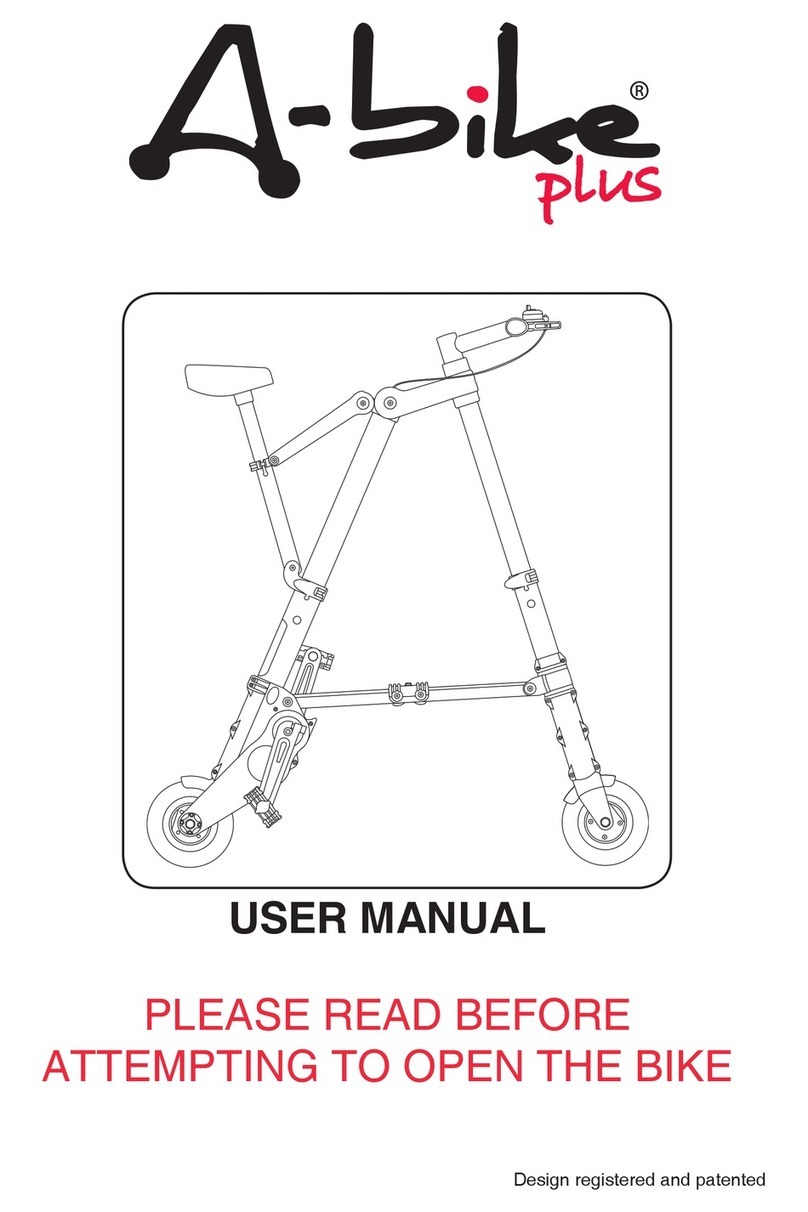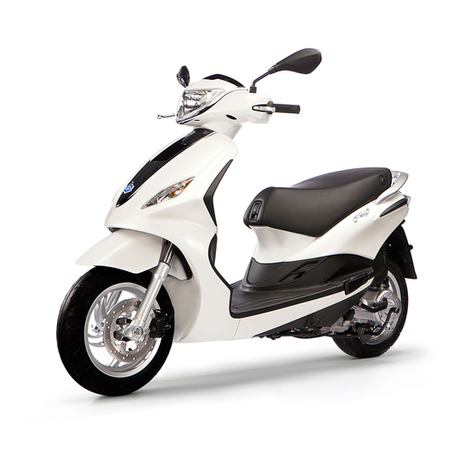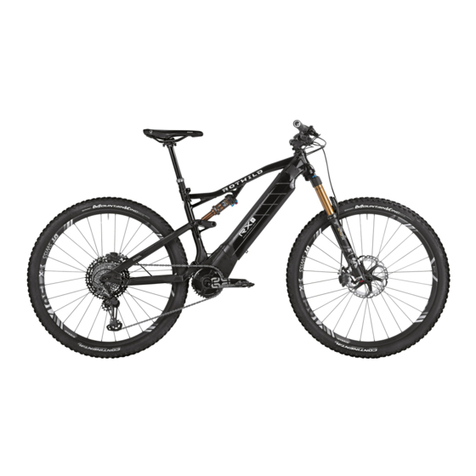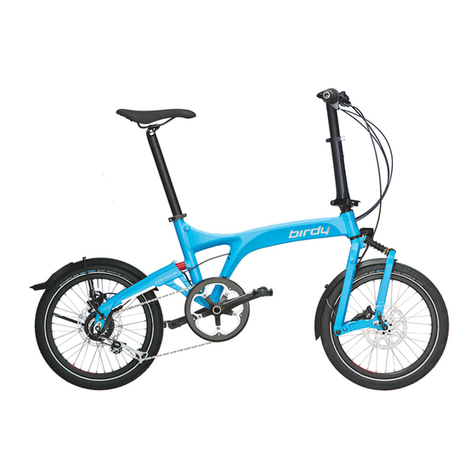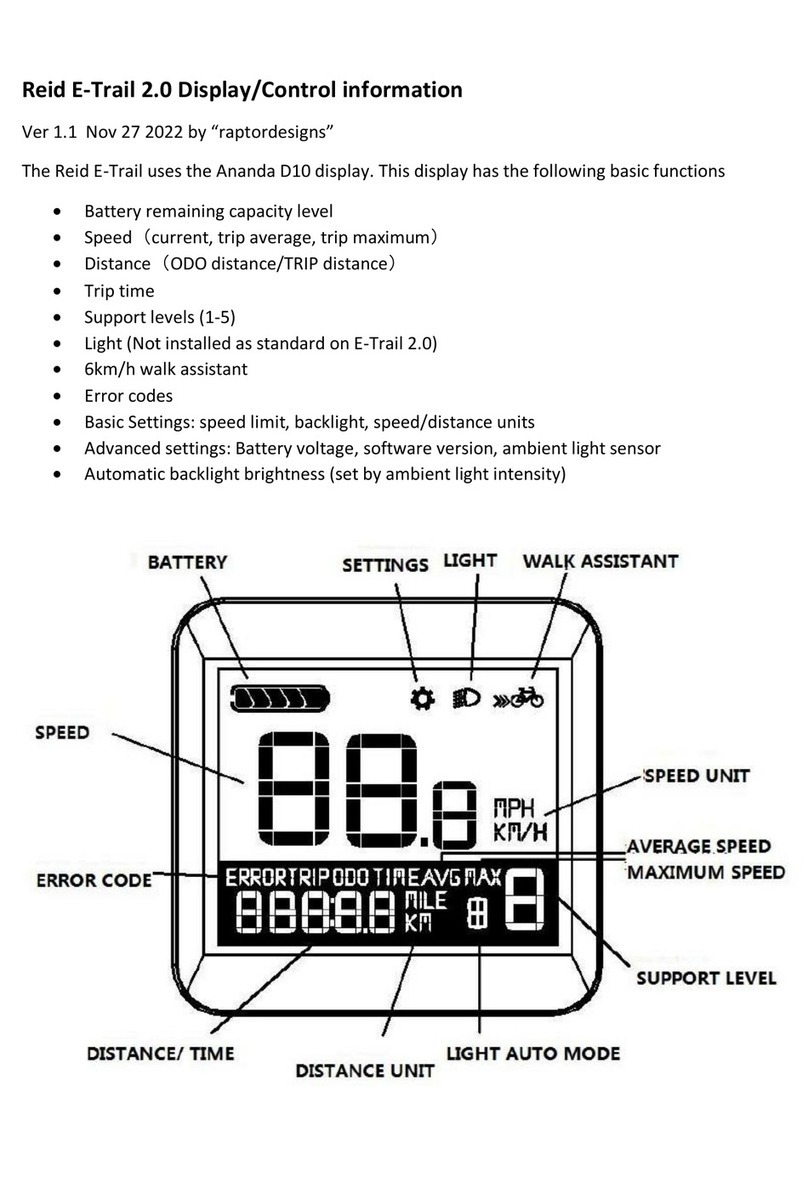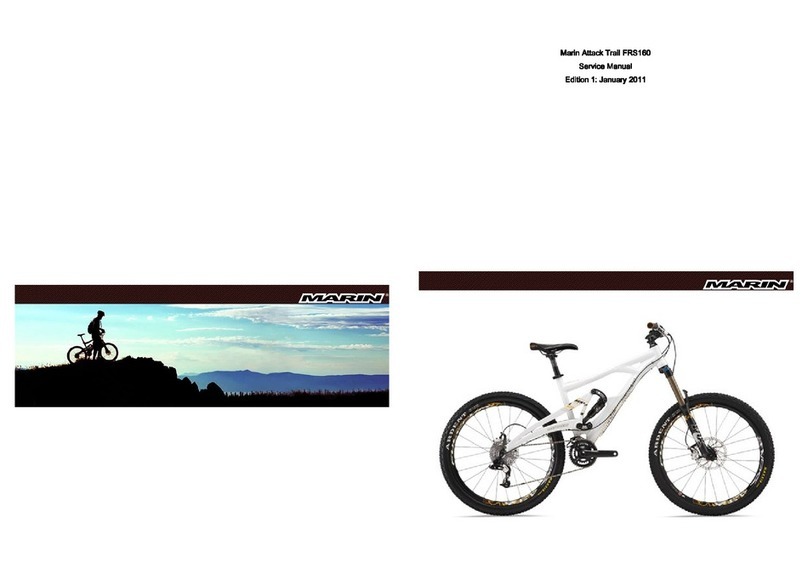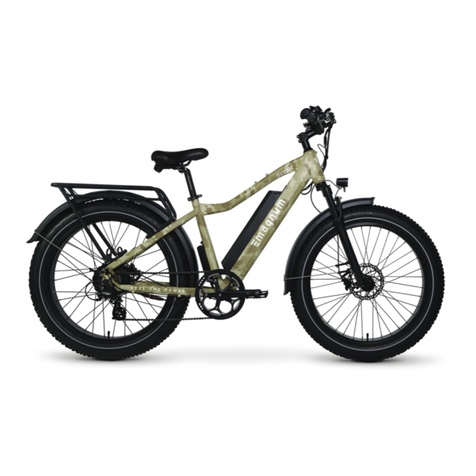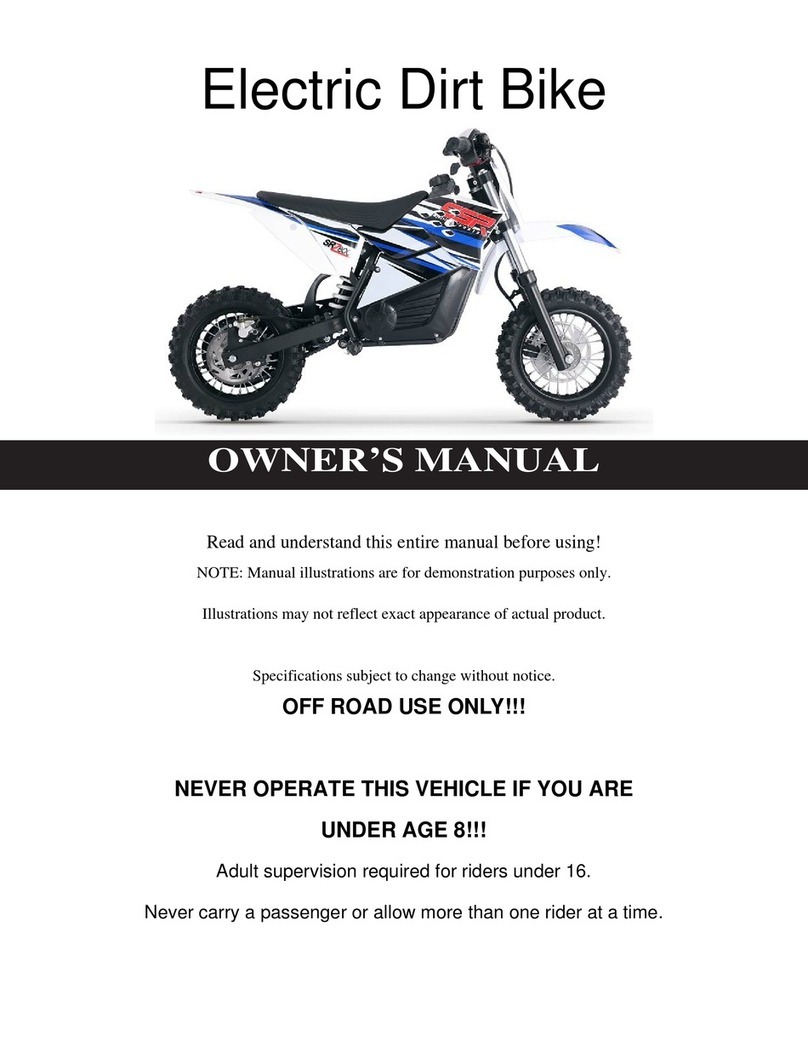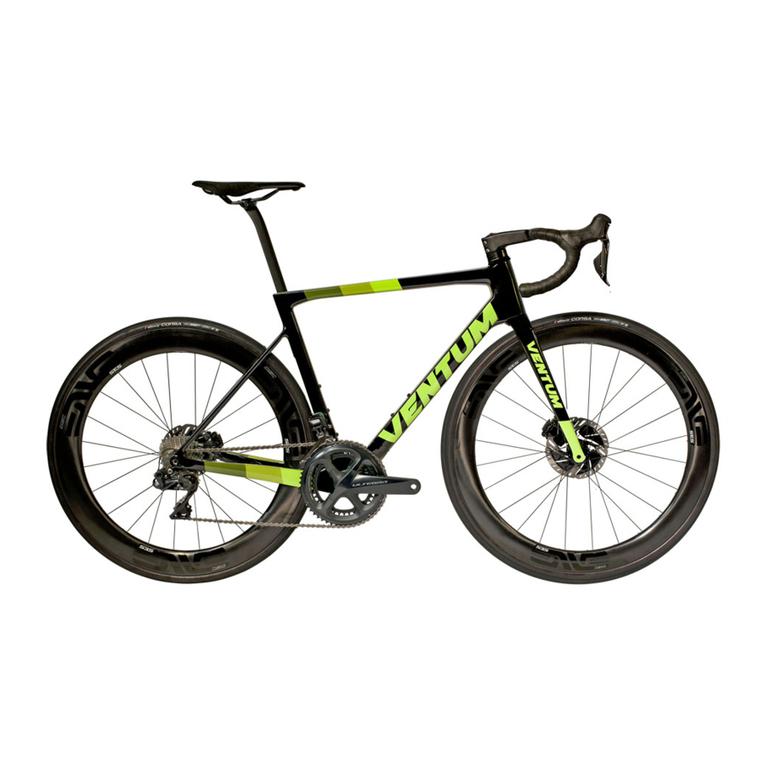Sinclair Research A-bike Plus User manual




open here for illustrated photo guide to opening the bike

YOUR
SETTING UPMAINTENANCEREPAIRS
WARRANTY
CONTENTS
Unfolding the bike (photo guide) (inside cover)
Introduction 1
Your A-bike Plus 2
Setting Up 7
Maintenance 19
Repairs 21
Warranty 32
INTRODUCTION

The A-bike was designed by
Sinclair Research in London
Sinclair Research is a registered trademark.

1
INTRODUCTION
Introduction
Congratulations and welcome to the A-bike Plus, the
world’s lightest and smallest folding bicycle. Before
using the bike you must read these instructions.
Designed for short trips and mixed mode transport the A-bike Plus
is unique in concept and design. This booklet will introduce you
to, show you how to use, take care of and to make repairs to your
A-bike Plus. It is vital that you use and maintain the bike correctly
to avoid damaging the product and harming yourself.
Please pay particular attention to notes highlighted in a box as these
are especially important and must be remembered at all times.
The geometry of the A-bike Plus is quite different from any other
bike and hence may feel a little strange at first, after a bit of prac-
tice we are sure you will find the bike easy and comfortable to ride.
Getting to know your A-bike Plus will enable you to get the most
out of it and know the limits, enabling your to use it safely.

2A-bike Plus User Manual
• A-bike Plus folding bicycle
• A-bike Plus air cushion saddle cover
• A-bike Plus toolkit
• A-bike Plus user manual
• A-bike Plus pump (optional)
• A-bike Plus Bag (optional)
The inclusion of the A-bike Plus Bag and A-bike Plus Pump may
vary in different countries.
Please note that riding the bike with under inflated tyres will
damage the bike and therefore it is highly recommended that users
use a Schrader pump with a pressure gauge. Also due to the high
pressure and low volume of air it is advised to use the A-bike shock
pump which minimises air loss when dis-attaching the pump.
Box contents
YOUR

3
YOUR
Warnings
Rider weight limit
The bike has a maximum weight limit of 85 kg (187 lbs), this includes
the rider and anything the rider is carrying, for example a back pack.
Not a mountain bike
The A-bike Plus is designed for smooth roads and it’s lightweight
construction means it’s not suitable for rough surfaces, off-road riding.
Do not attempt stunts on the bike.
Under inflated tyres
Riding the bike with under inflated tyres will damage the bike, please
ensure the tyres are inflated to 90 psi (6.2 bar).
Quick release levers and locking buttons
When opening the bike ensure that the locking buttons pop out. The
two quick release levers here should be hand tight and firmly secured.
Don’t step on the crosspiece
The crosspiece is not designed to bear any load. Do not stand on or
attach anything to this beam.
!

4A-bike Plus User Manual
YOUR
Labelled diagram
YOUR

5
YOUR
Top view
Handle Bar
Bell
Brake Cable
Front Upper Tube
Quick Release Clamp
Main Locking Buttons
(on both side)
Front Lower Tube
Lower Steering Joint
Front Fork
Crosspiece Button
Tyre
Brake Band
Wheel Hub
Pedal (on both sides)
Crank (on both sides)
Crank Case
Rear Lower Tube
Rear Upper Tube
Outer Seat Tube
Seat Clamp
Seat Post
Saddle
Seat Stay
Upper Steering Joint
Handlebar Grip
Brake Lever
Handlebar Locking Buttons
Handlebar stem
Reflectors
Crosspiece

6A-bike Plus User Manual
YOUR
Riding Safely
When riding the A-bike Plus it is important to remember to abide by
local bicycle riding laws.
Ride defensively and be vigilant of other road users. Always leave
a large enough gap between you and obstacles, slow down and
stop if necessary.
Watch out for uneven surfaces and pot holes.
When riding in the dark you should wear high visibility clothing and
use lights when appropriate.
Wet weather will reduce grip and increase stopping distances;
ride slower if necessary. Icy conditions should be avoided entirely.
Windy conditions can severely effect riding stability.
Always wear a helmet when riding.
Always wear suitable shoes, sandals are not appropriate.
Avoid loose clothing and anything that may get caught in the
mechanisms of the bike.
Become familiar with riding your bike slowly and in a safe environ-
ment before heading into areas with other traffic.
Store you bike securely and safely in a clean and dry area to avoid
damaging the bike.
If there are any broken parts, they must be replaced before riding.

7
SETTING UP
Adjusting saddle height
Choosing the Correct Saddle Height
With both feet flat on the ground adjust the saddle height so that
you can comfortably sit on the saddle.
1. Unlock the Seat Post quick release
clamp.
2. Slide the Seat Post vertically to
adjust the Saddle position as required.
The minimum insertion line should
NOT be visible, it should be inside the
outer tube.
3. Once the desired Saddle position
has been selected, make sure the
saddle is positioned forward and then
lock the Seat Post quick release clamp
so that you cannot twist the saddle out
of alignment.
If the saddle can twist then unlock the quick release lever and
tighten with an allen key before locking the quick release again and
re-testing.
Unlocked
Locked
Minimum
insertion
line
Before riding the bike check the seat height is
adjusted, the tyres are inflated and the brakes work.

8A-bike Plus User Manual
SETTING UP
Checking the tyres
Under inflated tyres make the ride less comfortable and less effi-
cient, turning and pedalling become difficult. It will also damage the
bike and could invalidate your warranty.
Riding the bike with under inflated tyres will damage the bike, please
ensure the tyres are inflated to 90 psi (6.2 bar).
To check the pressure it is possible to visually inspect the tyres
by pushing on the outside of the tyre, they should be very firm.
However for an accurate reading a pressure gauge is required.
Take care when accessing the valve and avoid pulling on it or
using excessive force, as this can cause the valve to tear away
from the innertube.
You should also take this opportunity to check the tyre’s tread, to
check for damage to the tyre and for debris in the tyre. Spotting a
piece of glass and removing it now could prevent a puncture later.
Tyres should be replaced when they become worn.
The tyres of the A-bike Plus contain a special gel that automatically
seals any small holes so hopefully punctures will be minimal.

9
SETTING UP
Adjusting the brakes
If the brake band is knocked it is possible for it to become
misaligned with the braking hub and wheel. If this happens it may
be necessary to gently bend the band back into shape. Care must
be taken not to cause strain around the brake band mounts. If the
brake band rubs against the wheel it can be gently bent away.
Hot brake bands and brake fade
The band brakes will become hot when used, be aware of this when
storing and handling the bike, allow the brakes to cool.
Brake fade may occur when used for long periods of time.
Adjusting brake bands
Only adjust the brakes when the bike is fully unfolded and extended
as this effect the brake cables.
Fine brake cable adjustment
Longer
Looser
Front wheel
Rotate Rotate
Shorter
Front wheel
To loosen
brake band
To tighten
brake band
To adjust the Right Hand brake (Front wheel):
The fine adjustment wheel can be found on the brake handles. Turn it to change
length of the cable accordingly as shown in the diagrams. You may need to hold
the cable still to prevent in rotating.
To adjust the rear wheel, do the same as above but on the left hand brake lever.
N
Front wheel
Tighter
Rear wheel

10 A-bike Plus User Manual
SETTING UP
Relax brake band to reduce braking force.
Fasten nut
M5 wrench
Relax cable tension
Unscrew
Brake lever is close to handlebar AND Brake barrel adjuster is at the longest state.
In longest
state
When the brake is too loose.
To tighten loose brake
M5 wrench
To loosen a tight brake
Major brake cable adjustment
Adjusting the brakes (2)

11
SETTING UP
Wrap the brake band closely around the brake barrel, using pliers to pull the cable end out.
Tighten the nut
Tighten
Unscrew M5 nut by wrench.
Unscrew
M5 wrench
Rotate
Displace
Rotate brake barrel adjuster to move the brake barrel fully in.
Enlarged N
Pull

12 A-bike Plus User Manual
SETTING UP
Unfolding the bike
Please also refer to the illustrated photo guide which can be found
inside the front cover of this user manual.
Trapped fingers
Fold and unfold the bike slowly and take care to avoid trapping
fingers, especially when dealing with the pedals.
It is important to follow each step in the correct order, the bike does
not need a lot of force to be unfolded and can be done in as little as
10 seconds.
1. Lift the Left and Right Handle Bar
ends up to the horizontal position and
slide them into the centre portion.
Check that both locking buttons are
fully engaged.
2a. Check BOTH quick release
clamps are unlocked.
2b. Raise seat post to horizontal
position.
Raise seat post to
horizontal position
Check BOTH quick release
clamps are unlocked

13
SETTING UP
3. Grasp handlebar stem and rear leg as shown and extend legs until
all FOUR quick release buttons are locked.
4. Rotate the Handle Bars 180° clockwise
(looking from the top). DO not force it in the
wrong direction as this will wrap the brake
cable around the stem of the hadelbars and
damage the bike.
5. Lock both quick release clamps.
Quick release levers and locking buttons
When opening the bike ensure that the locking buttons pop out. The
two quick release levers here should be hand tight and firm.

14 A-bike Plus User Manual
SETTING UP
6. To open out the legs, lower the bicycle down gently onto the
top of your foot with a tyre either side of the foot. As the legs part,
simply push down to fully open out.
7. Press the crosspiece centre down
until the quick release button pops up
and locks.
Unfolding the bike (2)
Crosspiece locking button
The locking button the crosspiece must pop out when the bar is
fully unfolded.
Other manuals for A-bike Plus
1
Other Sinclair Research Bicycle manuals
